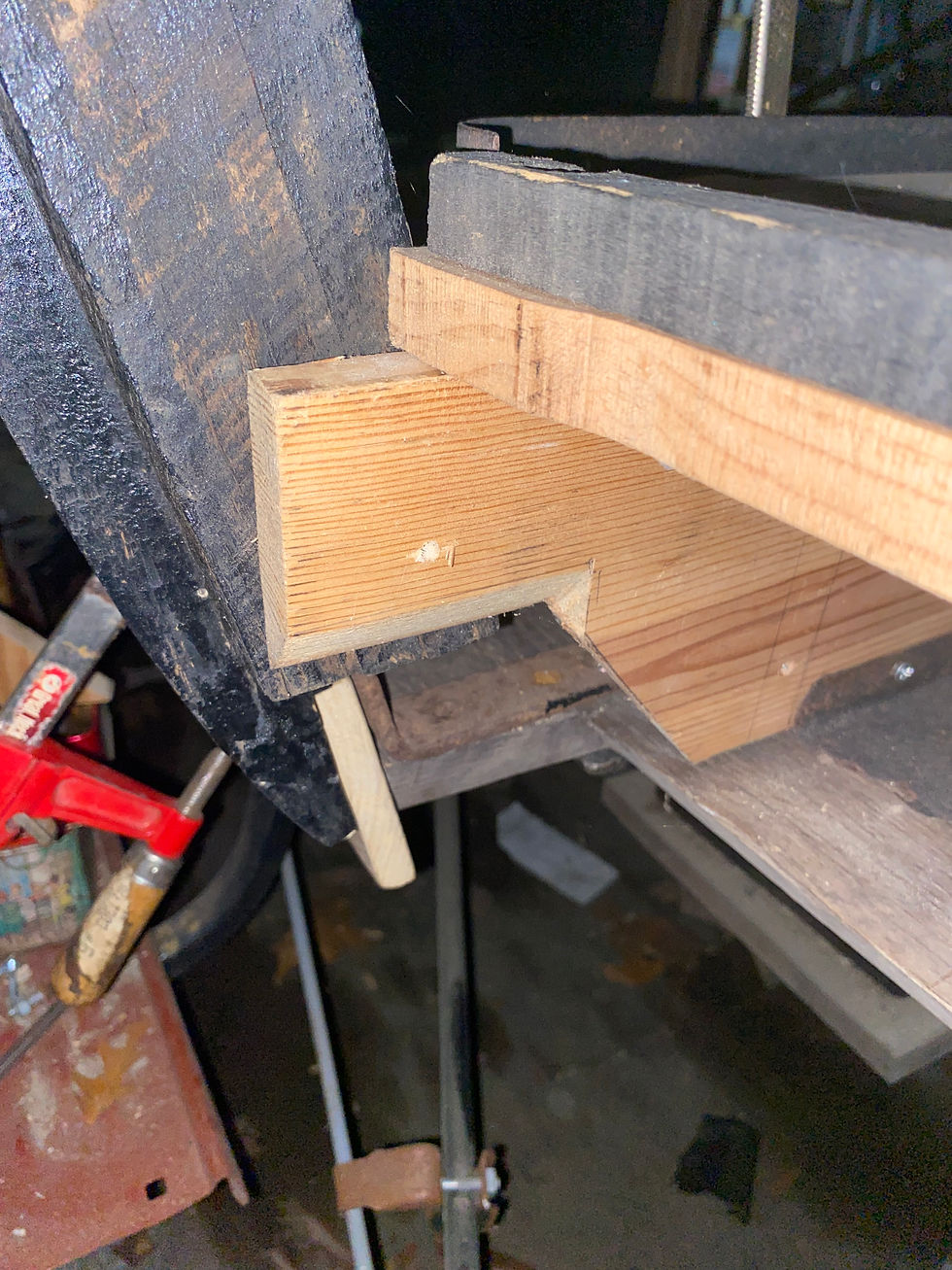Chassis Work
- army30th
- Dec 28, 2024
- 3 min read
After a brief hiatus...
At the end of this year's touring season (2024), I was able to take up the offer given by one of my antique car friends to store my touring in their garage. This would free up my workspace to allow me to begin working on my Sedan chassis.
My 21 year old son and my 57 year old self managed to push the chassis carcass up a small incline into the work area, which is a Shelter Logic "Garage in a Box", designed for an SUV or large vehicle. This allows me to work on it in a semi-enclosed space in various weather conditions. I have a contractor's heater inside to take off the chill if necessary.
The workspace is on a slight hill, barely perceptible, and necessitates the leveling of the chassis.

The chassis rolled quite well, however, there are no parking brakes on it at the time of its moving. The work area may seem primitive, but it is all that's available to me, unless my friend allowed me to store it in their garage instead of my touring. However, that would require a road trip every time I wanted to do any work on it. So, this will have to do. My touring was restored in a similar situation.
Before leveling of the frame and its components, I decided to replace the rear outer axle bearings and sleeves. Eventually, the inner bearings as well as the thrust washers will be addressed. The roller bearings I removed were not loose, but were slightly worn. I replaced them with a better set. I opted not to use the modern reproduction roller bearings as they do not have grease grooves. I did, however, install neoprene axle grease seals. I have a set of the leather ones, but decided neoprene would last longer. When time comes to do the differential innards, those seals may need to be redone. Not a big deal.


The next item was installing a replacement brake cam on the driver's side as it was worn significantly. This required removal of the radius rod, which would be replaced with another. The original was bent significantly. The cam needed to be cut as I could not remove the pins.



I had not previously replaced a cam and it was a learning experience for me.
Next, installation of brake rods and hangers. I did this on my touring as well so I was familiar with the process. The passenger side needs just a skosh more adjustment as the driver's side locks completely but the passenger does not. They both should lock when the brake handle is pulled as far back as it will go.

Installing the brakes was fairly straight forward, with one exception. The reproduced brake bolts that hold the shoes are slightly undersized and rotate freely in the mounting holes on the backing plate. This would not do, so the original bolts were used.
Finally, the leveling of the chassis can be executed. By placing paving stones under the jacks, and using the locking pins on the jacks. You would not believe how many videos I watch of people using these style of jacks and not engaging the locking pins. Just a tiny bit more to go.


The purpose of leveling the chassis is to facilitate bolting of the body sills. This will allow me to build the body onto the chassis, essentially replicating how the body was assembled on sawhorses or a rolling bench in a factory. Below is a photo of a Sedan body being painted while positioned on a rolling platform. In this photo, we can see the interior is already inside the car before being painted.




Comments